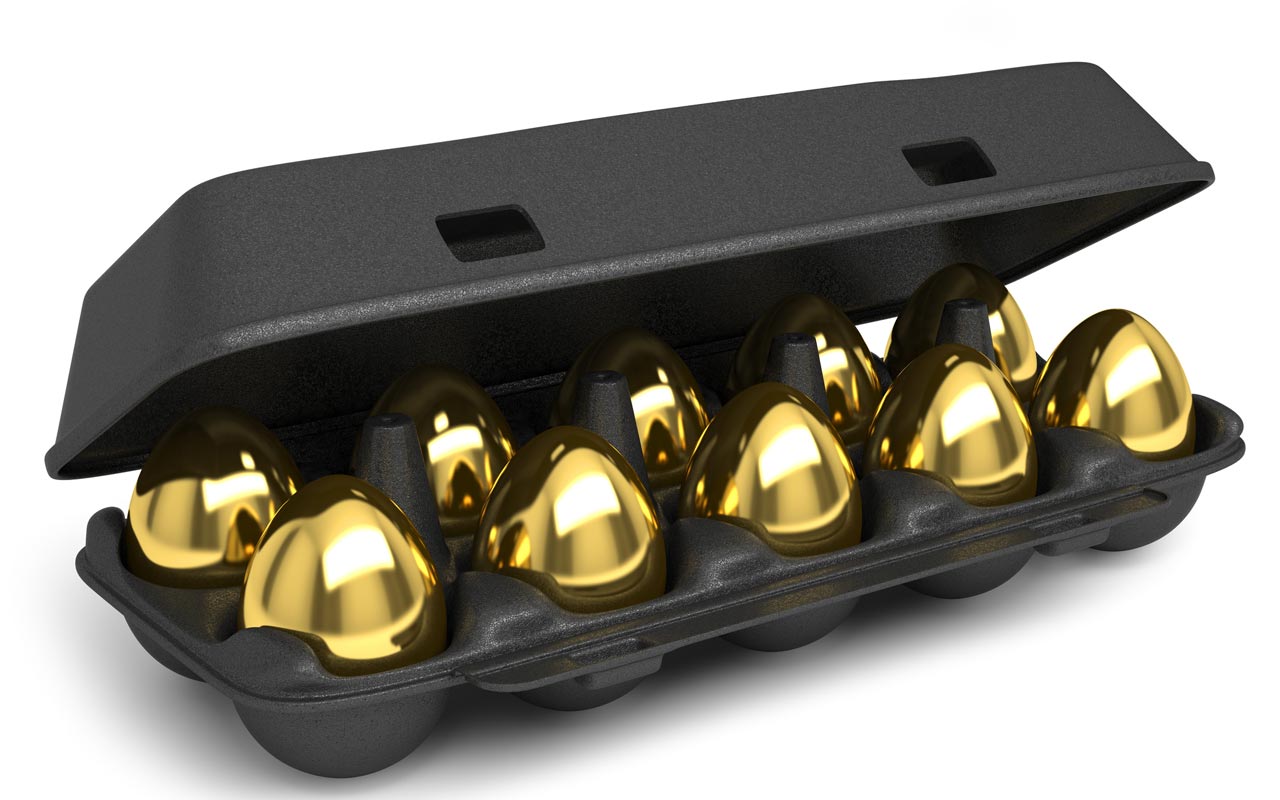11 Strategies for IRA Withdrawals in Retirement
When you invest in an IRA, 401(k) or other tax-deferred plan, you make a deal with Uncle Sam: You get years of tax-deferred growth, but you have to start taking money out—and give a cut to the IRS—after you turn age 70½.


When you invest in an IRA, 401(k) or other tax-deferred plan, you make a deal with Uncle Sam: You get years of tax-deferred growth, but you have to start taking money out—and give a cut to the IRS—after you turn age 70½. The calculations can be complicated, and the penalties for missteps are steep: If you don’t take the required minimum distribution by the deadline each year, you’ll pay a penalty of 50% of the amount you should have withdrawn.
The prospect of taking RMDs and facing the tax bill can be daunting, but there are a number of strategies you can use to minimize taxes, make the most of your investments and avoid costly mistakes.

Calculate the Amount of Your RMD Withdrawals
Your RMDs are based on the balance in your accounts as of December 31 of the previous year, divided by a life expectancy factor based on your age. Most people use the Uniform Lifetime table (Table III) in Appendix B of IRS Publication 590-B. If your spouse is more than 10 years younger than you and is your sole beneficiary, use Table II, the Joint Life and Last Survivor table, for the life expectancy factor.
Your IRA or 401(k) administrator can usually help with the calculations, or you can use our RMD calculator to determine the amount.

Time Your RMDs Right
You usually have to take your annual RMD by December 31, but you have until April 1 of the year after you turn 70½ to take your first required withdrawal. However, delaying that first withdrawal means you’ll have to take two RMDs in one year, which could have a ripple effect on other areas of your finances. The extra income could bump you into a higher tax bracket, make you subject to the Medicare high-income surcharge or cause more of your Social Security benefits to be taxable.

Pick the Best Accounts for RMDs
You have to calculate the RMD from each of your traditional IRAs (not Roths), including rollover IRAs and any SEP or SIMPLE IRAs. But you can add the total required withdrawals from all of those IRAs and take the money from any one or more of the IRAs.
When choosing which account to tap first, “pick the one you like the least,” says Mari Adam, a certified financial planner in Boca Raton, Fla. You could start with withdrawals from the IRA that has the highest fees, limited investing choices or a concentration in one stock, she says.
IRAs are owned individually, even if you’re married and file a joint tax return, so you and your spouse have to take your RMDs from your own accounts.

Understand How 401(k) Rules are Different
If you have several 401(k) accounts with former employers, you have to calculate and withdraw RMDs separately for each 401(k). You even have to take RMDs from Roth 401(k)s, although those withdrawals are not taxable. You can’t take 401(k) account RMDs from your IRAs or vice versa.
If you’re still working at 70½, you may be able to delay taking your RMD from your current employer’s 401(k) until April 1 of the year after you stop working (unless you own more than 5% of the company). But you still have to take RMDs from traditional IRAs and former employers’ 401(k)s.
If your current employer allows it, you may be able to roll funds from other 401(k)s into your current plan and avoid taking RMDs on that money while you’re still working. But those rules vary by plan, says Joe Gaynor, director of retirement and income solutions at Fidelity Investments.

Choose the Right Investments to Withdraw
Some IRA or 401(k) administrators automatically withdraw RMDs proportionately from each of your investments, unless you specify otherwise, and they could end up selling stocks or funds at a loss to make your payment. If you’d like to prevent that from happening, you can usually elect to take a fixed percentage from each of your investments or have 100% taken from cash. If you choose the cash option, the IRA administrator may send you an alert beforehand in case you need to sell shares to raise the cash.
Adam generally likes using pro rata withdrawals because it lets you keep your investment allocation the same, although sometimes she will withdraw more from one investment to rebalance the account.

Automate Your RMDs
If you want to simplify the process and not worry about missing deadlines, most IRA administrators will let you automate your RMDs. You can usually sign up to have the money withdrawn every month or quarter, or by a certain date each year. Make sure you understand how the IRA administrator chooses which investments to sell.

Donate to Charity and Get a Tax Break
After you turn 70½, you can transfer up to $100,000 directly from your IRA to charity each year (called a qualified charitable distribution), which counts toward your RMD but isn’t included in your adjusted gross income. This strategy can be particularly helpful now that fewer people itemize their deductions and otherwise wouldn’t get a tax break for their charitable gifts.
You can make the transfer to one or more tax-qualified charities (but not to a donor-advised fund). The transfer must be made directly from your IRA to the charity to count as a QCD; you can’t withdraw the money first. Ask your IRA administrator about its procedure. Most send the money directly from your account. A few let you write a check to the charity if you have check-writing privileges on your IRA. Let the charity know the money is coming so they can send you a confirmation, which you’ll need to keep with your records (see below).

Roll Money Over to a Roth
You don’t have to take RMDs from Roth IRAs, so any money you’ve rolled over from a traditional IRA to a Roth avoids future RMDs. However, you’ll have to pay taxes on the rollover, and if you do it after age 70½, you’ll have to take that year’s RMD before rolling over the money.

Consider a QLAC
Money you invest in a deferred-income annuity known as a qualified longevity annuity contract is removed from your RMD calculation. You can invest up to $130,000 from your IRA in a QLAC (or up to 25% of the balance in all of your traditional IRAs, whichever is less) at any age (most people do this in their fifties or sixties). You pick the age when you’d like to start receiving annual lifetime income, usually in your seventies or eighties (no later than age 85).
For example, a 60-year-old man who invests $130,000 in a QLAC could receive about $37,000 per year starting at age 80. That removes $130,000 from future RMD calculations, and he won’t have to pay taxes on that money until he starts to receive the $37,000 annual payouts at age 80. If he dies before age 80, he won’t receive anything—although he could get a version with smaller payouts that will give his heirs the difference if he dies before his payouts equal his investment.

Don’t Pay More in Taxes Than You Have To
If all of your IRA contributions were made with pretax or tax-deductible money, your RMDs will be fully taxable. But if you made any nondeductible contributions, a portion of each withdrawal will be tax-free. Keep track of your tax basis on Form 8606 so you don’t pay more in taxes than you owe. For more information, see the instructions for Form 8606 at IRS.gov.

How to Report Your Generosity
If you made a tax-free transfer of your RMD to charity (called a qualified charitable distribution), you might be confused when you receive Form 1099-R from your IRA administrator. This form reports how much money was distributed from your IRA for the year, but it doesn’t specify whether it was a withdrawal or a tax-free transfer to charity. It’s up to you to keep track of the QCD amount and to let your tax preparer know. (Most tax software programs will walk you through the process.)
When you file your income tax return, you report the total distributions on line 4a of Form 1040. Then subtract any portion that was a QCD and report the remaining amount on line 4b, writing “QCD” to indicate why the full amount is not taxable. (If you gave your full RMD to charity and didn’t have other distributions, you’d write “$0” and “QCD” on line 4b.) Keep an acknowledgement from the charity with your tax records.
Get Kiplinger Today newsletter — free
Profit and prosper with the best of Kiplinger's advice on investing, taxes, retirement, personal finance and much more. Delivered daily. Enter your email in the box and click Sign Me Up.

As the "Ask Kim" columnist for Kiplinger's Personal Finance, Lankford receives hundreds of personal finance questions from readers every month. She is the author of Rescue Your Financial Life (McGraw-Hill, 2003), The Insurance Maze: How You Can Save Money on Insurance -- and Still Get the Coverage You Need (Kaplan, 2006), Kiplinger's Ask Kim for Money Smart Solutions (Kaplan, 2007) and The Kiplinger/BBB Personal Finance Guide for Military Families. She is frequently featured as a financial expert on television and radio, including NBC's Today Show, CNN, CNBC and National Public Radio.
-
 Stock Market Today: Stocks Struggle Amid Tariff Uncertainty
Stock Market Today: Stocks Struggle Amid Tariff UncertaintyBoeing dropped after China suspended new aircraft orders, while Bank of America and Citi climbed on earnings beats.
By Karee Venema
-
 Starbucks 2025 Dress Code Changes: See the New Look
Starbucks 2025 Dress Code Changes: See the New LookThe 2025 Starbucks dress code change features a uniformed look as part of creating a more familiar and friendly cafe experience.
By Sean Jackson
-
 Tax Day 2025: Don’t Miss These Freebies, Food Deals and Discounts
Tax Day 2025: Don’t Miss These Freebies, Food Deals and DiscountsTax Day You can score some sweet deals on April 15 in some select restaurants like Burger King, Shake Shack, and more.
By Gabriella Cruz-Martínez
-
 Tax Time: Does Your Kid Influencer Owe Taxes?
Tax Time: Does Your Kid Influencer Owe Taxes?State Tax Some minors are making big money on social media. Here’s how to know if they need to file taxes.
By Gabriella Cruz-Martínez
-
 Ask the Editor: Readers' Tax Questions, April 11, 2025
Ask the Editor: Readers' Tax Questions, April 11, 2025Ask the Editor: Taxes, April 11, 2025 — Joy Taylor, The Kiplinger Tax Letter Editor, answers questions on Roth IRAs, RMDs and other retirement accounts.
By Joy Taylor
-
 Free IRS Tax Filing for 30 Million People: Will It Continue Under Trump?
Free IRS Tax Filing for 30 Million People: Will It Continue Under Trump?Tax Filing Direct File was piloted last year in 12 states and has since expanded to 25. But some wonder whether the program will last under the Trump administration.
By Gabriella Cruz-Martínez
-
 What to Do With Your Tax Refund: 6 Ways to Bring Growth
What to Do With Your Tax Refund: 6 Ways to Bring GrowthUse your 2024 tax refund to boost short-term or long-term financial goals by putting it in one of these six places.
By Rachael Green
-
 Taxpayer Revolt? Why More People Are Avoiding Filing Taxes This Year
Taxpayer Revolt? Why More People Are Avoiding Filing Taxes This YearTax Season It may be tempting to skip filing due to the overwhelmed IRS, but doing so could have financial and legal consequences.
By Kelley R. Taylor
-
 U.S. Treasury to Eliminate Paper Checks: What It Means for Tax Refunds, Social Security
U.S. Treasury to Eliminate Paper Checks: What It Means for Tax Refunds, Social SecurityTreasury President Trump signed an executive order forcing the federal government to phase out paper check disbursements by the fall.
By Gabriella Cruz-Martínez
-
 IRS Layoffs Spark Delays, Doubt This Tax Season
IRS Layoffs Spark Delays, Doubt This Tax SeasonTax Season Tax experts say Trump’s downsizing of the IRS is already causing problems.
By Gabriella Cruz-Martínez
